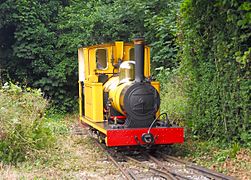Amberley Museum Railway facts for kids
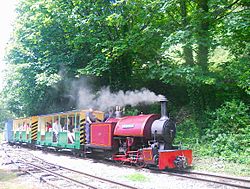
Bagnall 0-4-0ST 'Peter' and a passenger train nears Brockham Station
|
|
| Overview | |
|---|---|
| Dates of operation | 1982–present |
| Technical | |
| Track gauge | 2 ft (610 mm) |
| Length | 500 yd (460 m) |
| Other | |
| Website | Amberley Museum and Heritage Centre Rail Group website |
The Amberley Museum Railway is a special railway located at Amberley Museum in West Sussex, England. It's a narrow gauge line, which means its tracks are closer together than regular train tracks. The railway has many different types of trains, including old steam engines, diesel engines, and even electric ones.
The tracks at Amberley Museum are mostly 2 ft (610 mm) wide. However, the museum has a huge collection of engines and train cars. These range from very narrow 18 in (457 mm) tracks to wider 5 ft 3 in (1,600 mm) ones. The railway offers fun passenger rides for visitors. They use a mix of steam, diesel, and battery-powered trains.
Contents
History of the Railway
How it Started
Before Amberley Museum was built, the area was a chalk quarry. A company called Pepper & Sons used to dig chalk there. This quarry had its own railway with standard tracks. It connected to the main London, Brighton & South Coast Railway at Amberley station.
Over the years, Pepper & Sons owned several different engines. These included steam engines from Marshall and Aveling & Porter. They also had a petrol engine called a Hibberd Planet. When the quarry closed in the late 1960s, the railway tracks were removed.
The Early Days of the Museum Railway
When the museum first opened in the late 1970s, people wanted to build a small railway. This railway would show what typical industrial narrow gauge trains were like. The first engine to arrive was a Hibberd Simplex 1980. It came from a sewage works in Apuldram.
In 1982, a company called Thakeham Tiles donated their entire railway system. This included two Hudson Hunslet engines, several wagons, and some track. They were getting a new conveyor system, so they didn't need the railway anymore. The museum had to remove everything over one weekend, which they successfully did. Today, some of the Thakeham track is still used on parts of the line where passengers don't ride. One of the engines, Hunslet 3653, is also still in use. The other, Hudson Hunslet 2208, is stored away. It has been used for spare parts for other engines at the museum.
Also in 1982, the Brockham Railway Museum closed down. They moved all their trains to Amberley. This big collection, which included several steam engines, inspired the museum. They decided to make the railway bigger so it could carry passengers.
Growing the Collection
From 1982 to 1984, a new railway line was built at Amberley. It ran along one side of the old quarry pit. The line connected Amberley and Brockham stations. The very first passenger train was pulled by an engine named Polar Bear.
In the 1980s, two diesel engines, Hudson Hunslet 3097 and Blue Star, were very important for passenger services. Later, a newer engine, Motor Rail Simplex 60S prototype 11001, arrived. In the mid-1980s, a steam engine called Decauville 0-4-0WT 'Barbouilleur' started running. After Polar Bear's boiler needed major repairs around 1987, 'Barbouilleur' was the only steam engine available until 1993. 'Polar Bear' returned in 1993 with a new boiler. Another engine named 'Peter' joined it that same year. The engine 'Townsend Hook' left in 1995 for a restoration attempt that didn't work out.
Expanding the Railway
The railway continued to grow in the 2000s. In the early 2000s, it was decided that a large World War I Baldwin engine, 778 Lion, needed a new home. It had been stored for many years and was too big for the tight curves at Amberley. It moved to the Leighton Buzzard Light Railway, where it is now in use.
A new building for exhibitions and storing train cars was opened in 2003. This was built with money from a lottery fund. Before this, the train cars were stored outside and were getting damaged. A new shed for running and repairing trains opened in 2005. This became the main place for the passenger steam engines. It also had a special charging station for the battery-electric engines. In 2006, the steam collection grew with the arrival of Bagnall 0-4-0ST 2091 Wendy.
The main railway line was made longer in mid-2007. A new section went around the top of the quarry pit to Cragside station. In 2008, a Hunslet diesel-hydraulic engine 8969 No. 12 became the main non-steam engine for passengers. The steam collection grew again in 2009 when Quarry Hunslet 0-4-0ST 542 Cloister arrived. However, both of these engines left Amberley in the summer of 2012.
The Railway Today
The main railway line starts at Amberley station, which is near the museum entrance. It runs along the side of the old quarry pit, past the De Witt lime kilns, to Brockham station. Brockham is currently the only station in the middle of the line. From Brockham, the line curves around the top of the pit. It passes the running shed and ends at Cragside station, which is across the pit from Brockham.
The industrial lines, which are not for passengers, connect to the main line at Brockham station. At Amberley station, there is a rarely used side track that goes into the woodyard. Brockham has a small side track on Platform 2. It also has an old ticket office from Hove station that used to belong to the London, Brighton and South Coast Railway.
There is also the Betchworth Hall shed. This shed is used to restore the engine Townsend Hook. Eventually, it will become a museum to show items from the Dorking Greystone Lime Co. This includes engines like Townsend Hook, Monty, and The Major, along with some old wagons and other items.
The railway holds its yearly Gala Weekend on the second weekend of July. They also have two Industrial Trains Days in April and October.
Locomotives at Amberley
This section lists the engines at Amberley Museum, based on information from December 2017.
Engines marked 'In occasional use' usually only run during special railway events. They are often on display in the museum building or stored in one of the sheds or the tunnel. Engines marked 'Air Fitted/Piped' can pull passenger trains.
Steam Locomotives
| Name | Works Number |
Type | Gauge | Builder | Year built |
Previous Operator | Status | Notes | Image |
|---|---|---|---|---|---|---|---|---|---|
| Polar Bear | 1781 | 2-4-0T | 2 ft (610 mm) | W.G. Bagnall | 1905 | Groudle Glen Railway | In use | Boiler Certificate expires in 2023. Air fitted. | 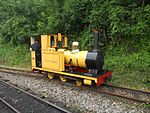 |
| Peter | 2067 | 0-4-0ST | 2 ft (610 mm) | W.G. Bagnall | 1917 | Cliffe Hill Quarry Co. | In use | Built as 3 ft (914 mm) gauge, converted to 2 ft (610 mm) in 1919. Boiler Certificate expired in 2019. Air fitted. | 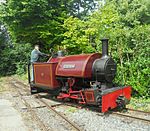 |
| Barbouilleur | 1126 | 0-4-0WT | 600 mm (1 ft 11 5⁄8 in) | Decauville | 1947 | L'enterprise Gagneraud | Static display | Awaiting overhaul. Privately owned. Air fitted. | 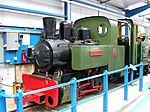 |
| Townsend Hook | 172L | 0-4-0T | 3 ft 2 1⁄4 in (972 mm) | Fletcher Jennings | 1880 | Dorking Greystone & Lime Co Ltd, Betchworth | Static display | 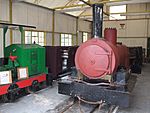 |
|
| 23 | 23L | 0-4-0T | 1 ft 10 in (559 mm) | Wm. Spence | 1920 | Guinness Brewery, Dublin | Static display | 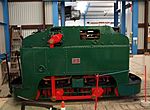 |
Internal Combustion Locomotives (Diesel and Petrol)
| Name | Works Number | Gauge | Builder | Year Built | Previous Operator | Status | Notes | Image |
|---|---|---|---|---|---|---|---|---|
| T0001 | 3751 | 2 ft (610 mm) | Baguley-Drewry | 1980 | RNAD Dean Hill, Wiltshire | In occasional use. Privately Owned. Air fitted. | 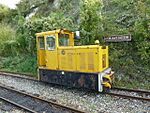 |
|
| Peldon | JF21295 | 2 ft (610 mm) | Fowler | 1936 | Essex Water Authority, Abberton | Awaiting repair. Air fitted. |  |
|
| - | FH1980 | 2 ft (610 mm) | Hibberd | 1936 | City of Chichester Sewage Works | In occasional use. |  |
|
| - | FH3627 | 2 ft (610 mm) | Hibberd | 1953 | North Bierley Sewage Works, Bradford | In occasional use. | ||
| - | 45913 | 2 ft 6 in (762 mm) | Hudson | 1932 | Midhurst Whites Ltd, Midhurst | ex-Gloddfa Ganol. On static display. | 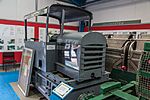 |
|
| - | DM686 | 2 ft (610 mm) | Hudswell Clarke | 1948 | National Coal Board, Tilmanstone Colliery | Undergoing cosmetic restoration. | 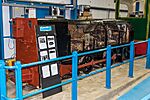 |
|
| - | HE2208 | 2 ft (610 mm) | Hudson Hunslet | 1941 | Thakeham Tiles, Storrington | Source of spares. | ||
| - | HE3097 | 2 ft (610 mm) | Hudson Hunslet | 1944 | Borough of Merton Sewage Works | In use. Air fitted. | ||
| Blue Star | Unknown | 2 ft (610 mm) | Hudson Hunslet | Unknown | Star Construction, Partridge Green, Sussex | In use. Air fitted. | 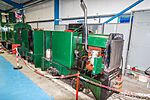 |
|
| - | HE3653 | 2 ft (610 mm) | Hunslet | 1946 | Thakeham Tiles, Storrington | In occasional use. | ||
| No.12 | HE8969 | 2 ft (610 mm) | Hunslet | 1980 | BAE Bishopton, Glasgow | In use. Air fitted. | 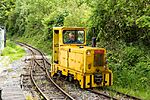 |
|
| - | L33937 | 2 ft (610 mm) | Lister | 1949 | William H Collier Ltd, Marks Tey | In occasional use. Privately Owned. | ||
| - | L34521 | 2 ft (610 mm) | Lister | 1949 | Cumberland Moss Litter Industries, Carlisle | In occasional use. | 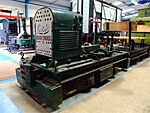 |
|
| Redland | OK6193 | 2 ft (610 mm) | Orenstein & Koppel | 1937 | Redland Pipes Ltd., Ripley | In occasional use. | ||
| Monty | OK7269 | 3 ft 2 1⁄4 in (972 mm) | Orenstein & Koppel | 1936 | Dorking Greystone & Lime Co Ltd, Betchworth | In occasional use. | 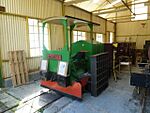 |
|
| The Major | OK7741 | 2 ft (610 mm) | Orenstein & Koppel | 1937 | Dorking Greystone & Lime, Betchworth | In occasional use. | 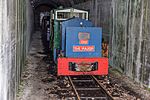 |
|
| Sonia | OK4013 | 2 ft (610 mm) | Orenstein & Koppel | 1930 | Diamond Tread (Chart) Ltd (Ashford) | In occasional use. Privately Owned. | ||
| - | MR872 | 2 ft (610 mm) | Motor Rail | 1918 | C V Buchan & Co Ltd | Static display. | ||
| 'The Breadbin' | MR1381 | 2 ft (610 mm) | Motor Rail | 1918 | War Department | In occasional use. | 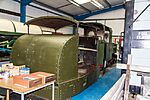 |
|
| No.27 | MR5863 | 2 ft (610 mm) | Motor Rail | 1934 | Joseph Arnold, Leighton Buzzard | In occasional use. | ||
| - | MR10161 | 2 ft 11 in (889 mm) | Motor Rail | 1950 | London Brick Works, Arlesey | Static display. | ||
| Ibstock | MR11001 | 2 ft (610 mm) | Motor Rail | 1956 | London Brick Co., Yaxley | In use. Air fitted. | 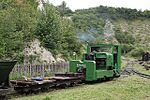 |
|
| Burt | MR9019 | 1,435 mm (4 ft 8 1⁄2 in) | Motor Rail | 1959 | Burt, Boulton and Haywood Timber, Erith | In occasional use. | ||
| - | RR80 | 2 ft (610 mm) | Ransomes and Rapier | 1936 | Chinnor Cement & Lime Co Ltd | In occasional use. | 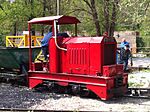 |
|
| - | RH166024 | 2 ft (610 mm) | Ruston & Hornsby | 1933 | Colne Valley Water Co, Rickmansworth | Dismantled, awaiting restoration. | ||
| - | RH187081 | 2 ft (610 mm) | Ruston & Hornsby | 1937 | City of York Sewage Department | In occasional use. Privately Owned. | ||
| - | 4 | 2 ft (610 mm) | Thakeham Tiles | c1946 | Thakeham Tiles, Storrington | ex-Gloddfa Ganol. In occasional use. Privately owned. | ||
| - | 5 | 2 ft (610 mm) | Thakeham Tiles | c1950 | Thakeham Tiles, Storrington | In occasional use. Privately owned. | ||
| WD904 | 3403 | 2 ft (610 mm) | D Wickham & Co | 1943 | MoD Eastriggs | In occasional use. Privately owned. Air piped. | 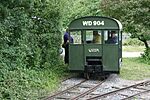 |
Battery-Electric Locomotives
| Works Number | Gauge | Builder | Year Built | Previous Operator | Status | Notes | Image |
|---|---|---|---|---|---|---|---|
| 16303 | 2 ft (610 mm) | Brush Traction | 1917 | HMEF Queensferry, Deeside | Operational, occasional use. Privately owned. | ||
| 16306 | 2 ft (610 mm) | Brush Traction | 1917 | HMEF Queensferry, Deeside | Dismantled, incomplete. Used as spares for 16303. No longer on site. | ||
| 808 | 2 ft (610 mm) | English Electric | 1931 | Post Office Railway, London | Static Display. |  |
|
| 4998 | 2 ft (610 mm) | Wingrove & Rogers | 1953 | Redland Brick Ltd, North Holmwood | Operational. Air piped. | 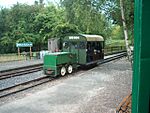 |
|
| 5031 | 2 ft (610 mm) | Wingrove & Rogers | 1953 | Dismantled, source of spares. | |||
| 5034 | 2 ft (610 mm) | Wingrove & Rogers | 1953 | Redland Brick Ltd, North Holmwood | Operational. |  |
|
| T8033 | 2 ft (610 mm) | Wingrove & Rogers | 1979 | Redland Brick Ltd, North Holmwood | Operational. | 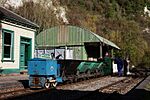 |
Passenger Train Cars
The Amberley Museum Railway has several types of passenger cars for visitors to ride in:
- One coach from RAF Fauld. This car was restored in 2007. It can run by itself or with the Lydd or Penrhyn coaches.
- Two Lydd coaches. These came from the Lydd Ranges in Kent. They can run together as a pair or with the Fauld coach to make a three-car train.
- Two Penrhyn Quarry Railway coaches. These are open-top coaches. They need to run with either the Fauld coach or one Lydd coach. This is because they don't have their own brake position or air brake tanks.
- Four Groudle Glen Railway coaches. These usually run with the engine Polar Bear. However, they can also run with some other diesel and steam engines.
- Wickham trolley 3404. This was originally a trailer car for a powered trolley (3403). It has now been changed to a push-pull trailer. It runs with battery engine 4998.
- One Thorpe Park coach. This car was built by Alan Keef. It is currently just the body frame. New wheels and undercarriage parts are planned for this coach.
Images for kids


